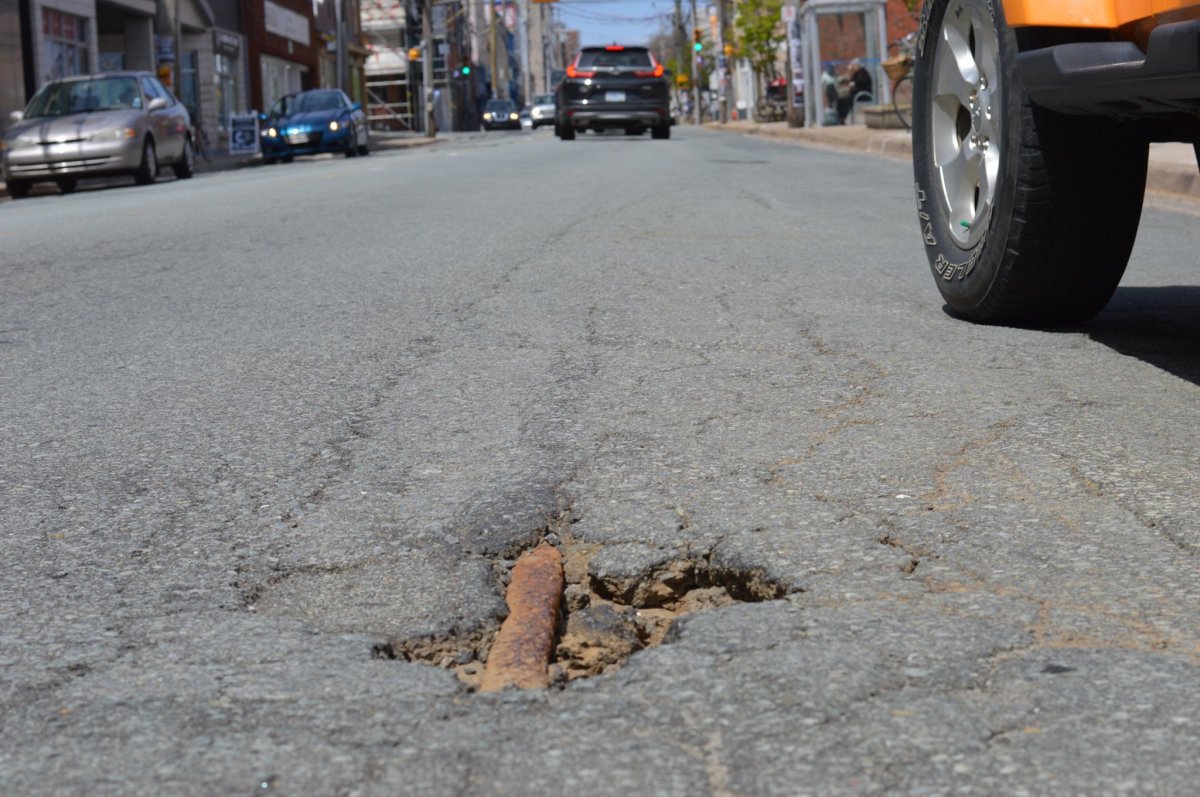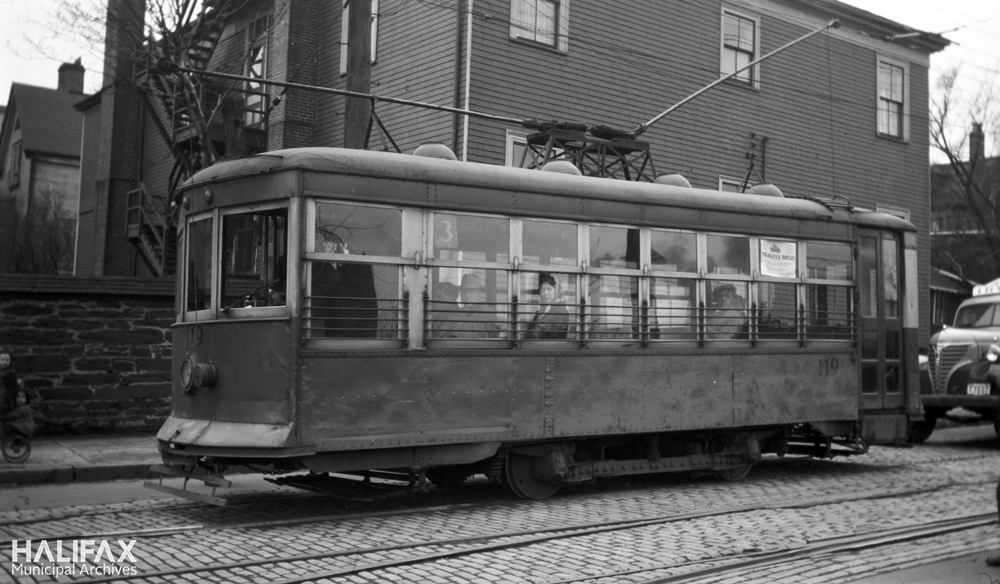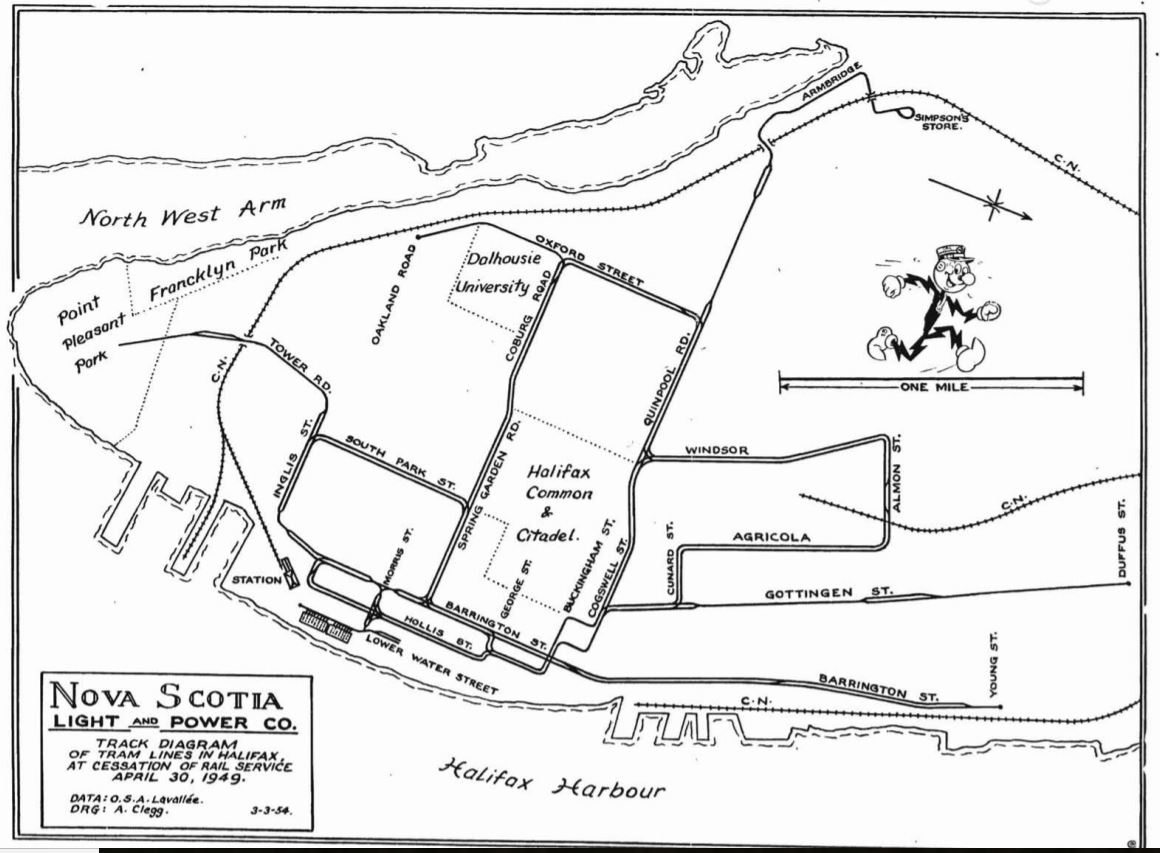Pitted and rusted, the metal beams creak as they are torn away from the ground.

Lifted out of Halifax’s Gottingen Street by an excavator, the pieces of metal — roughly three feet in length — are discarded into a dump truck.
The strips of metal only occasionally appear, poking through Halifax’s main streets whenever asphalt chips away in just the right location.
The beams are one of the few remaining remnants of the city’s rail car system that dates back to 1869 — a precursor to the motorized bus system that Halifax Regional Municipality (HRM) uses today.
READ MORE: Halifax Transit collects public feedback on BRT at open house
The rail system of yesterday
The story of Halifax’s decision to adopt a rail system is interconnected with the city’s status as a major port in both the First and Second World War.
First adopted in 1869, the city began using a streetcar system, which ran off of tracks along many of the city’s major thoroughfares.
The cars, known as Birneys, were much loved by the city’s citizens– even if they were small and cramped. They were reportedly well adjusted to climb the steep hills of Halifax’s downtown core.
According to an article published by Robert B. Brown in 1954 for the Canadian Railroad Historical Association, the Nova Scotia Light and Power Company — who functioned as the city’s transit operator — examined it’s rail system in the wake of the Second World War and realized that its Birneys were no longer capable of meeting the city’s needs.
“The poor little Birneys staggered under a wartime load of 31 million passengers,” Brown wrote.
“When peace came at last, the company found that it would have to replace practically all of its cars and rails.”
They moved instead to scrap its street railway system and replace it with a trolley tram, also known as a trolley bus system.
WATCH: Halifax looking at ways of improving ‘flow of buses’ on Gottingen Street

The change happened slowly but by March 26, 1949, the city ran its last rail car in the downtown core.
Called the “Day of Sadness” in some media reports, the final car was decorated for the occasion.
It had a “tearful bewhiskered face paint on the front” and farewell messages paint on its side and rear, according to Brown.
One of the messages was a strangely haunting poem that read:
“Farewell to all you motorists, to-day my journey ends!
So let’s forget past arguments, shake hands and part as friends.
You’ve followed me around the streets and many times you swore
Because I beat you to the stop and dared you to pass my door!”

As more of the vehicles were retired it was decided that it would not be proper to allow the general public to purchase their beloved Birneys and turn them into roadside attractions.
“They are definitely going to be scrapped after a long and faithful service. They are not very pretty when they are around the country as eyesores,” J.C. MacKeen, the president of Nova Scotia Light and Power Company, was recorded saying at the time.
None of the rail cars survive today, and all that remains now are pictures — and the still buried rail lines.
READ MORE: Halifax Transit had a problem arriving on time this summer
Move to trolley service
The trolley system rolled out with a fleet of 65 new electric trolley buses in 1949.
Since the buses ran on rubber tires and overhead lines, the tracks for the rail system were paved over.
The company predicted that it would have 15 million passengers on its new transit system within three years of adoption.
But by 1952 the company was “astounded” to find that its service had carried 28 million people.
Brown reports that the company had to order twelve additional trolleys to deal with the unexpected demand.
The trolleys would run until 1969, eventually being replaced by motorized buses that Haligonians would be familiar with today.
Progress moves forward
There are still many of the old rail lines buried throughout the city.
But even after being buried under asphalt and lying unused for nearly 70 years, these pieces of a bygone era can cause the well-oiled machine of a modern city to grind to a halt.
“If lines are in the way of roadwork, we remove them. If the work can be done without removing them, we pave over them,” said Nick Ritcey, a spokesperson for the Halifax Regional Municipality.
This week’s activities on Gottingen Street are preparation for a future project.
In the near future, a natural gas line will be laid underneath the street — something that rail lines would block.
As a result, they’re now being removed.
Ritcey says the city will also be removing some of the rail lines under Spring Garden and Coburg roads later this summer.
Construction makes way for new things — but sometimes the past has to be unearthed to move forward.








Comments